Targeting WDR5/ATAD2 signaling by the CK2/IKAROS axis demonstrates therapeutic efficacy in T-ALL
- PMID: 39785511
- PMCID: PMC11969266
- DOI: 10.1182/blood.2024024130
Targeting WDR5/ATAD2 signaling by the CK2/IKAROS axis demonstrates therapeutic efficacy in T-ALL
Abstract
T-cell acute lymphoblastic leukemia (T-ALL) is an aggressive hematological malignancy with a poor prognosis and limited options for targeted therapies. Identifying new molecular targets to develop novel therapeutic strategies is the pressing immediate issue in T-ALL. Here, we observed high expression of WD repeat-containing protein 5 (WDR5) in T-ALL. With in vitro and in vivo models, we demonstrated the oncogenic role of WDR5 in T-ALL by activating cell cycle signaling through its new downstream effector, ATPase family AAA domain-containing 2 (ATAD2). Moreover, the function of a zinc finger transcription factor of the Kruppel family (IKAROS) is often impaired by genetic alteration and casein kinase II (CK2) which is overexpressed in T-ALL. We found that IKAROS directly regulates WDR5 transcription; CK2 inhibitor, CX-4945, strongly suppresses WDR5 expression by restoring IKAROS function. Last, combining CX-4945 with WDR5 inhibitor demonstrates synergistic efficacy in the patient-derived xenograft mouse models. In conclusion, our results demonstrated that WDR5/ATAD2 is a new oncogenic signaling pathway in T-ALL, and simultaneous targeting of WRD5 and CK2/IKAROS has synergistic antileukemic efficacy and represents a promising potential strategy for T-ALL therapy.
© 2025 American Society of Hematology. Published by Elsevier Inc. Licensed under Creative Commons Attribution-NonCommercial-NoDerivatives 4.0 International (CC BY-NC-ND 4.0), permitting only noncommercial, nonderivative use with attribution. All other rights reserved.
Conflict of interest statement
Conflict-of-interest disclosure: The authors declare no competing financial interests.
Figures

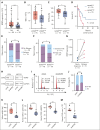
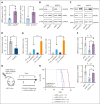
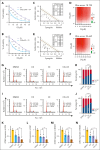
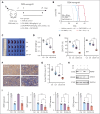
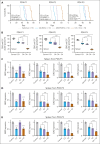
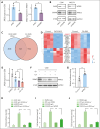
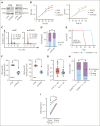
Comment in
-
Two is better than one: dual targeting of WDR5 in T-ALL.Blood. 2025 Mar 27;145(13):1339-1341. doi: 10.1182/blood.2024027633. Blood. 2025. PMID: 40146156 No abstract available.
Similar articles
-
IKAROS and CK2 regulate expression of BCL-XL and chemosensitivity in high-risk B-cell acute lymphoblastic leukemia.Blood. 2020 Sep 24;136(13):1520-1534. doi: 10.1182/blood.2019002655. Blood. 2020. PMID: 32396934 Free PMC article.
-
Transcriptional Regulation of PIK3CD and PIKFYVE in T-Cell Acute Lymphoblastic Leukemia by IKAROS and Protein Kinase CK2.Int J Mol Sci. 2021 Jan 15;22(2):819. doi: 10.3390/ijms22020819. Int J Mol Sci. 2021. PMID: 33467550 Free PMC article.
-
Ikaros sets the threshold for negative B-cell selection by regulation of the signaling strength of the AKT pathway.Cell Commun Signal. 2024 Jul 12;22(1):360. doi: 10.1186/s12964-024-01732-5. Cell Commun Signal. 2024. PMID: 38992657 Free PMC article.
-
Regulation of cellular proliferation in acute lymphoblastic leukemia by Casein Kinase II (CK2) and Ikaros.Adv Biol Regul. 2017 Jan;63:71-80. doi: 10.1016/j.jbior.2016.09.003. Epub 2016 Sep 18. Adv Biol Regul. 2017. PMID: 27666503 Free PMC article. Review.
-
Systemic pharmacological treatments for chronic plaque psoriasis: a network meta-analysis.Cochrane Database Syst Rev. 2017 Dec 22;12(12):CD011535. doi: 10.1002/14651858.CD011535.pub2. Cochrane Database Syst Rev. 2017. Update in: Cochrane Database Syst Rev. 2020 Jan 9;1:CD011535. doi: 10.1002/14651858.CD011535.pub3. PMID: 29271481 Free PMC article. Updated.
Cited by
-
Characterization of CK2, MYC and ERG Expression in Biological Subgroups of Children with Acute Lymphoblastic Leukemia.Int J Mol Sci. 2025 Jan 26;26(3):1076. doi: 10.3390/ijms26031076. Int J Mol Sci. 2025. PMID: 39940843 Free PMC article.
-
CK2 in the spotlight: decoding its role in hematological malignancies and therapeutic applications.Discov Oncol. 2025 May 30;16(1):965. doi: 10.1007/s12672-025-02797-5. Discov Oncol. 2025. PMID: 40445457 Free PMC article. Review.
References
-
- Vadillo E, Dorantes-Acosta E, Pelayo R, Schnoor M. T cell acute lymphoblastic leukemia (T-ALL): new insights into the cellular origins and infiltration mechanisms common and unique among hematologic malignancies. Blood Rev. 2018;32(1):36–51. - PubMed
-
- Patel AA, Thomas J, Rojek AE, Stock W. Biology and treatment paradigms in T cell acute lymphoblastic leukemia in older adolescents and adults. Curr Treat Options Oncol. 2020;21(7):57. - PubMed
-
- Pui CH, Evans WE. Treatment of acute lymphoblastic leukemia. N Engl J Med. 2006;354(2):166–178. - PubMed
MeSH terms
Substances
Grants and funding
LinkOut - more resources
Full Text Sources

